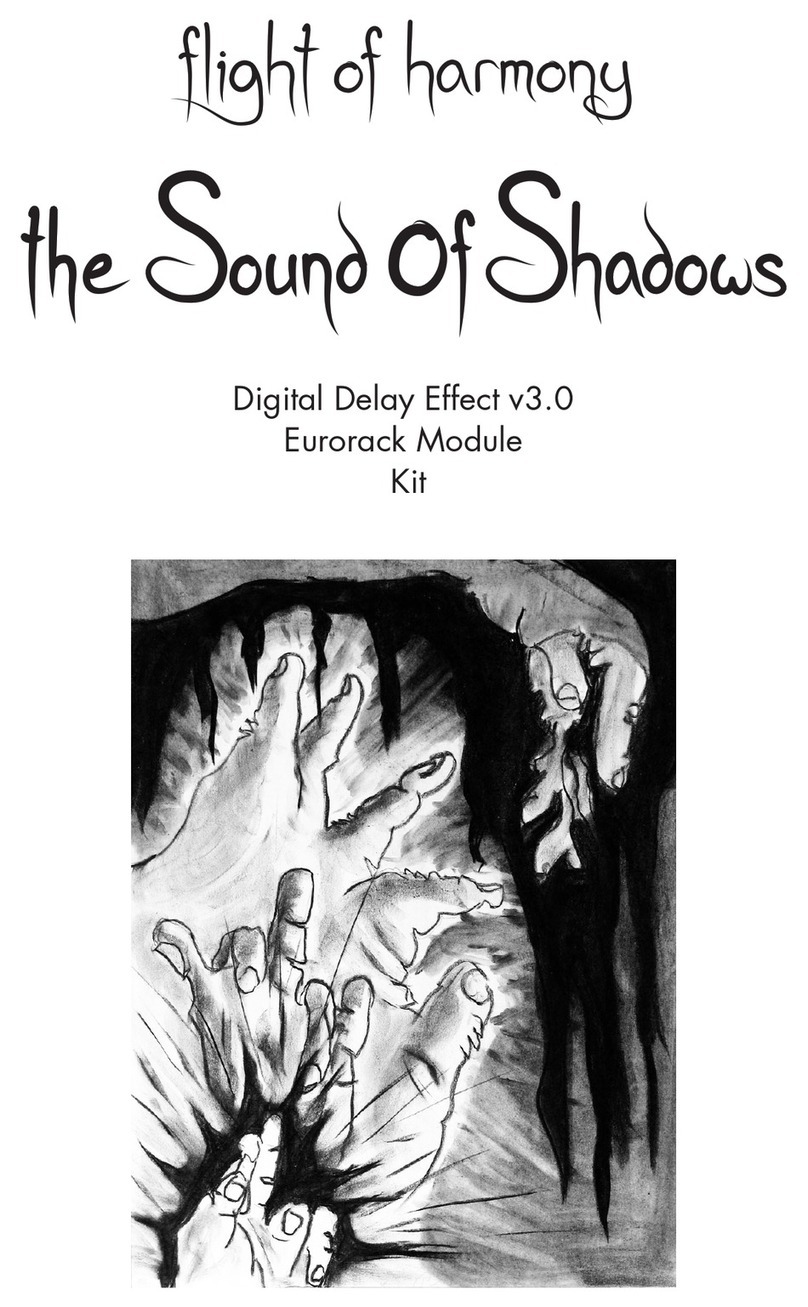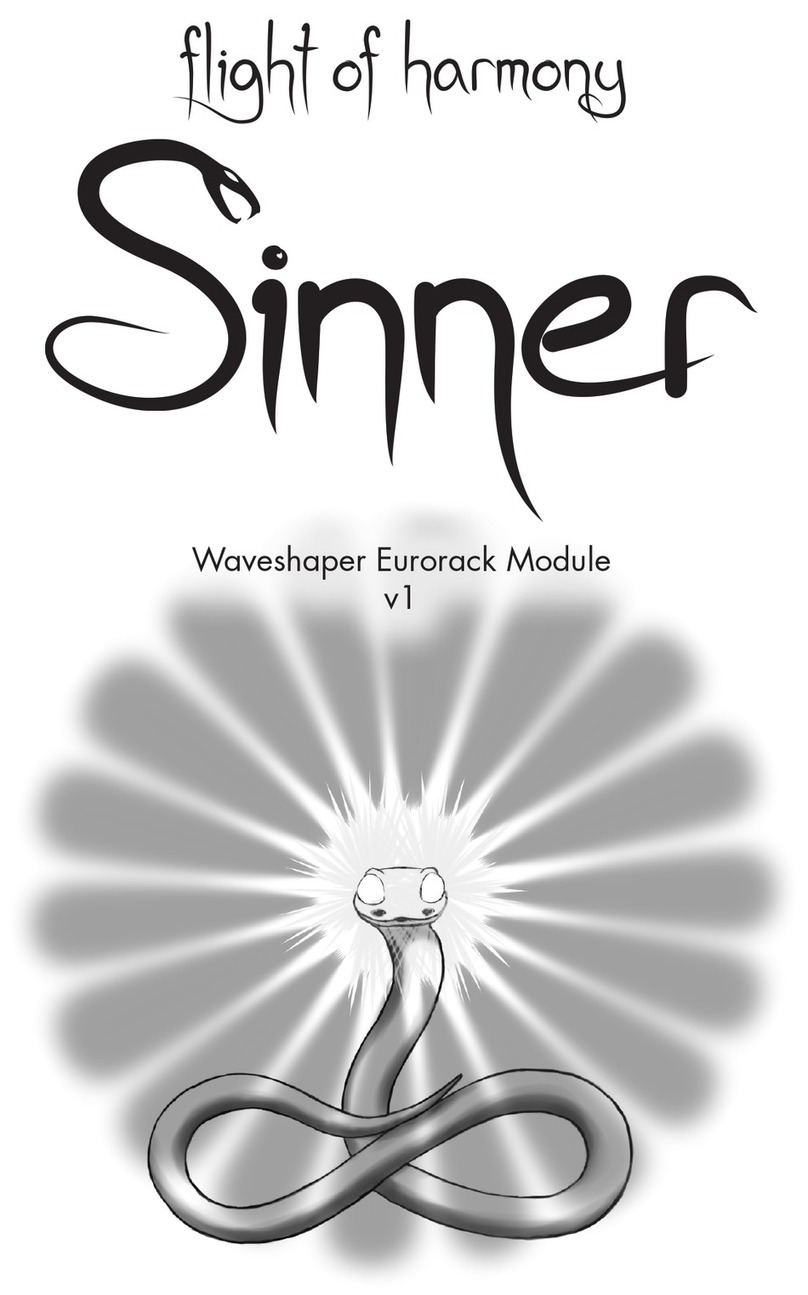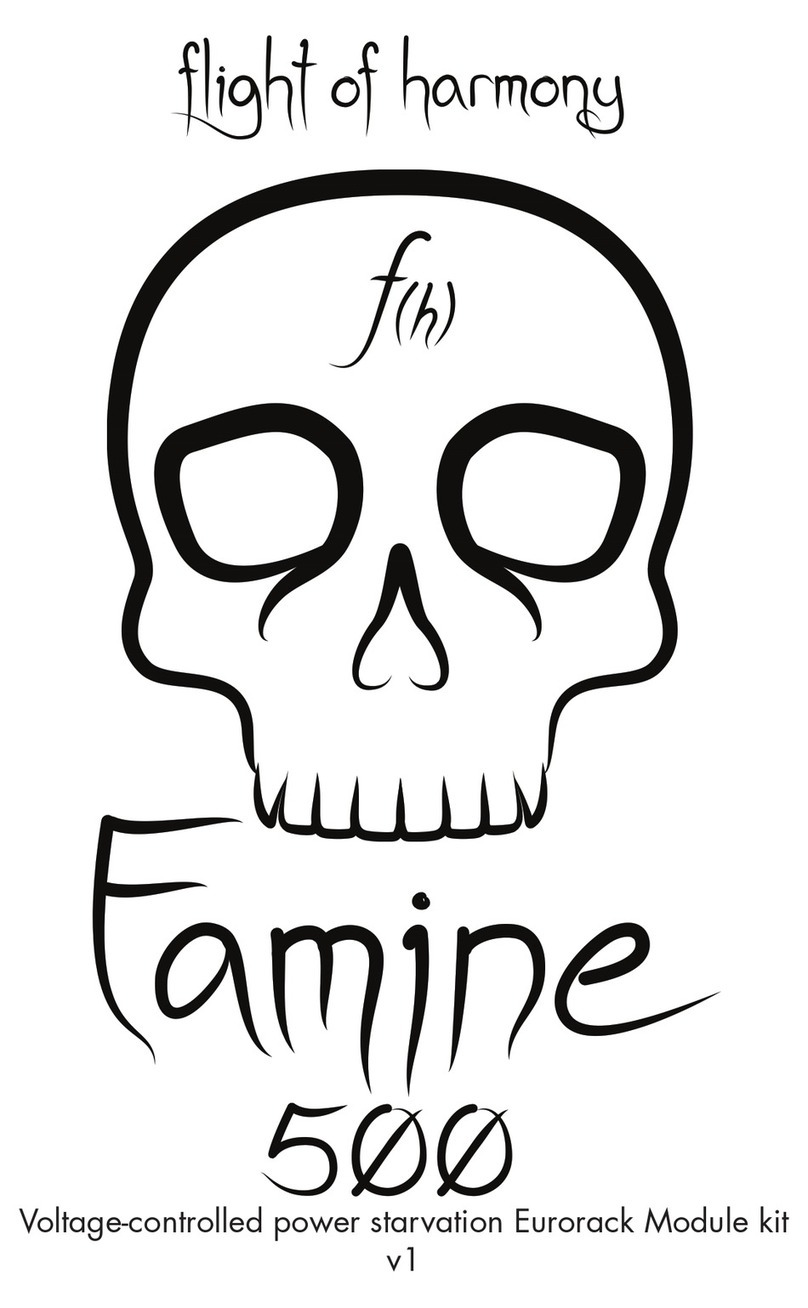3/8
Controls
Rate: This controls the delay clock rate, which in turn controls how fast the
delay steps through its memory array and thusly the amount of delay. Clockwise
rotation increases the rate (which decreases the delay time), counter-clockwise
decreases the rate (which increases the delay time).
Feedback: Controls how much of the delayed signal is fed back into the
delay cell. Feedback is what creates a reverberation or echo sound – multiple
repetitions of an acoustic event. Clockwise rotation increases the amount fed
back, and thus the number of repeats, counter-clockwise decreases the amount.
The nominal operating area is between 6:00 and 9:00 during normal
usage. More than this will set up a self-propagating feedback cycle that will
quickly get out of hand.
Insert: This is the attenuator for the feedback loop insert jack. The
jack is situated between the delay cell output and the feedback cell input.
The feedback cell input is calibrated for the output of the delay cell, which
is around 1.5Vp-p maximum, and most standard signals inserted here will
overload the feedback cell unless attenuated, hence the Insert attenuator.
Turn clockwise to increase the signal level, counter-clockwise to attenuate.
When not using the Insert jack, it is recommended to keep this control
turned fully clockwise, to the maximum position. Otherwise, you are attenuating
the output of the delay cell, which will affect everything else further down the
signal path.
Input: This is the input level control. Just like a volume knob – clockwise
increases level, counter-clockwise attenuates the signal level.
Mix: Um, yeah. Guess what this controls? The balance of the mixed signal
at the Mix output! Seriously, this controls the mix between the Clean and Delay
signals at the Mix jack, really!
VCA: This controls the VCA output level – A.K.A.4: the volume knob.
Standard behavior with a minor quirk – this control will not fully attenuate the
output, but a negative CV applied to the VCA CV input will bring the level much
further down. It was either this or add another IC + associated components to the
PCB and jack the price further up.
4) A.K.A. = Also Known As






























